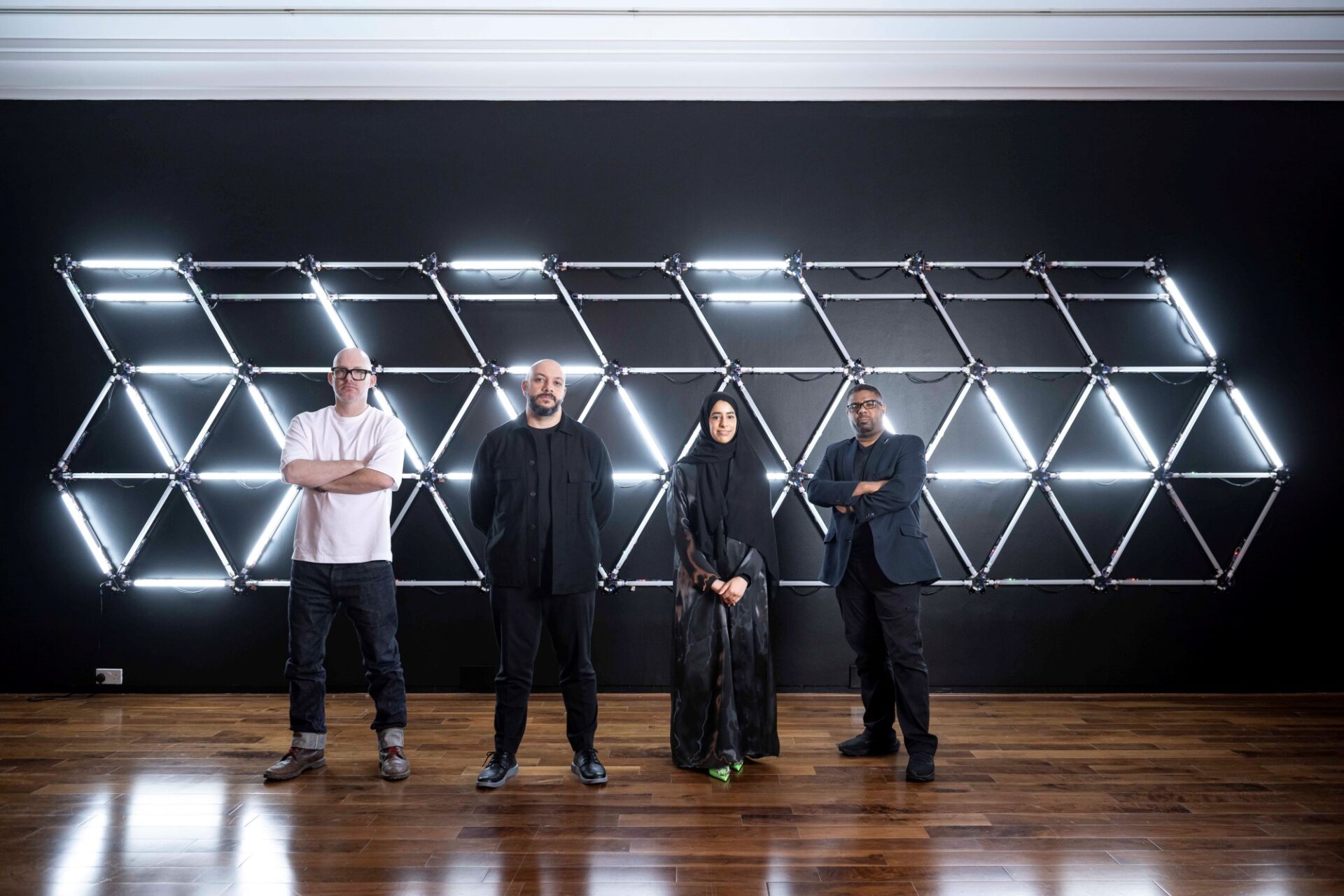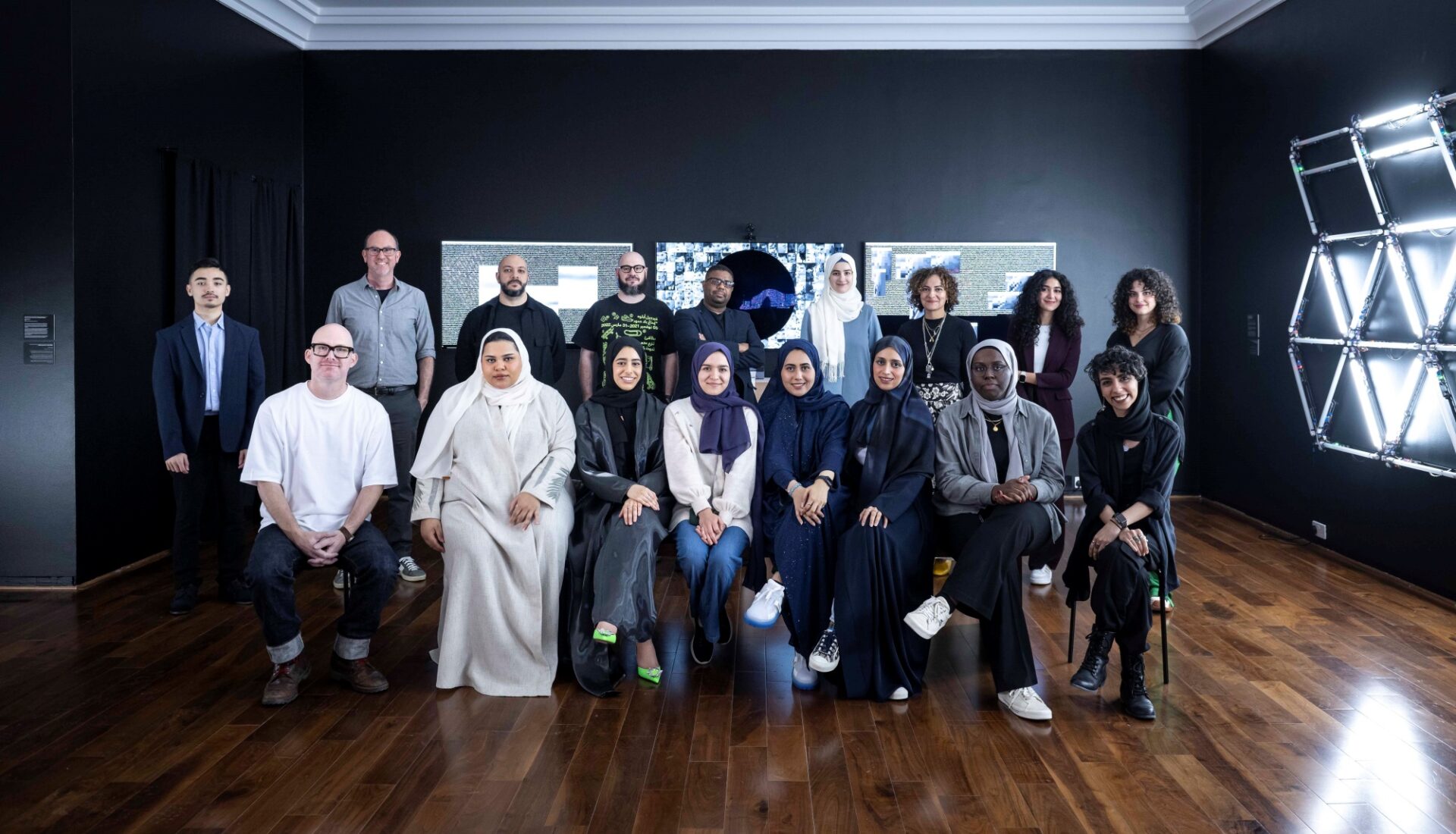New VCUarts Qatar Exhibition Contemplates ‘Language as Machine’
The students and professors of VCUarts Qatar invited audiences for an interactive session to experience and contemplate the relationship between language, heritage and innovation in their latest exhibition that is ongoing till April 8, 2023.
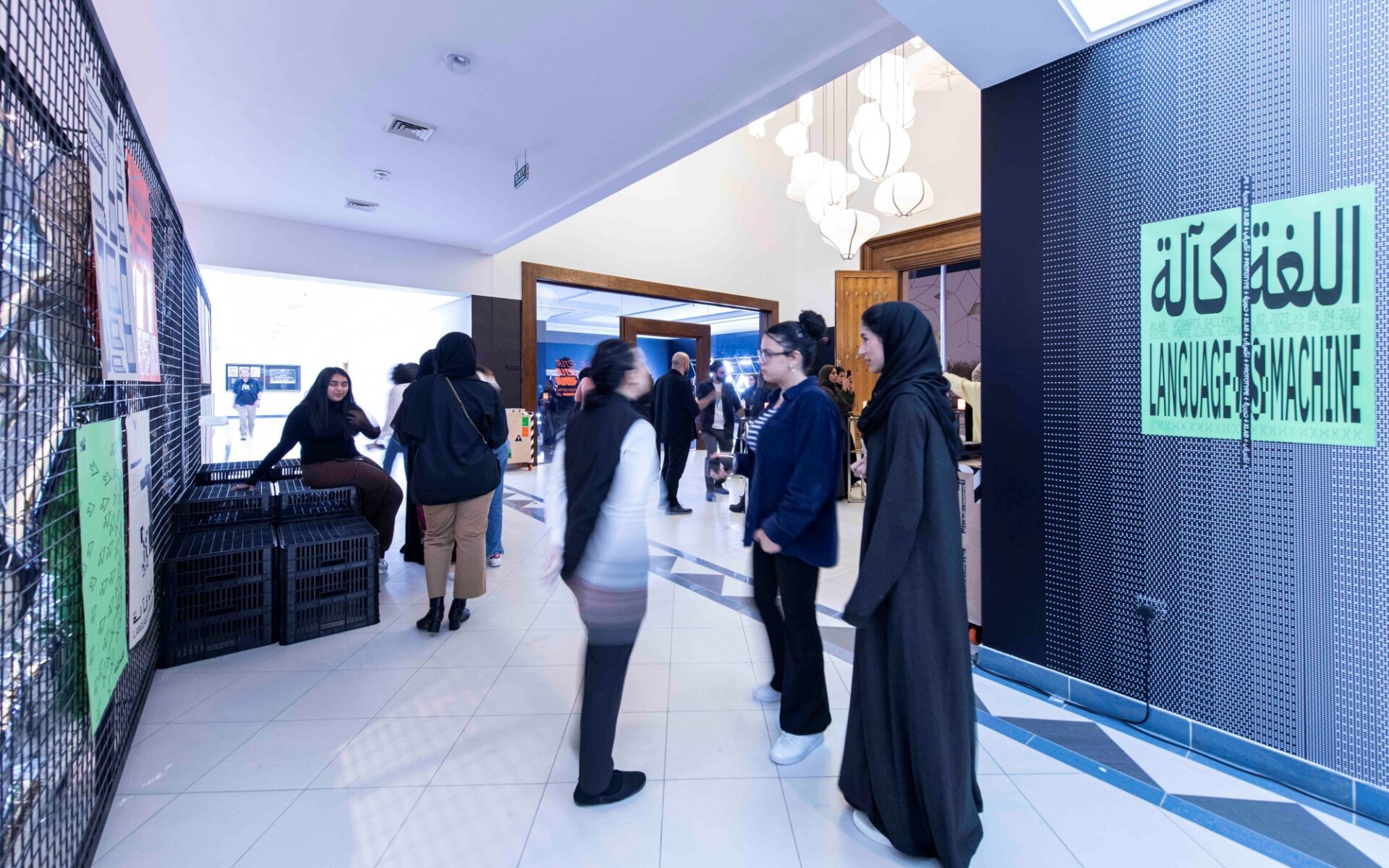 VCUarts Qatar’s The Gallery space is bursting with energy: with new, exciting, and creative exhibition spaces setting the mood high after the FIFA World Cup 2022 festivities. Titled ‘Language-as-Machine’ the exhibition at VCUarts Qatar features works that fuse computational design and art to explore the interplay between technology, language, the evolution of human thought processes and innovation.
VCUarts Qatar’s The Gallery space is bursting with energy: with new, exciting, and creative exhibition spaces setting the mood high after the FIFA World Cup 2022 festivities. Titled ‘Language-as-Machine’ the exhibition at VCUarts Qatar features works that fuse computational design and art to explore the interplay between technology, language, the evolution of human thought processes and innovation.
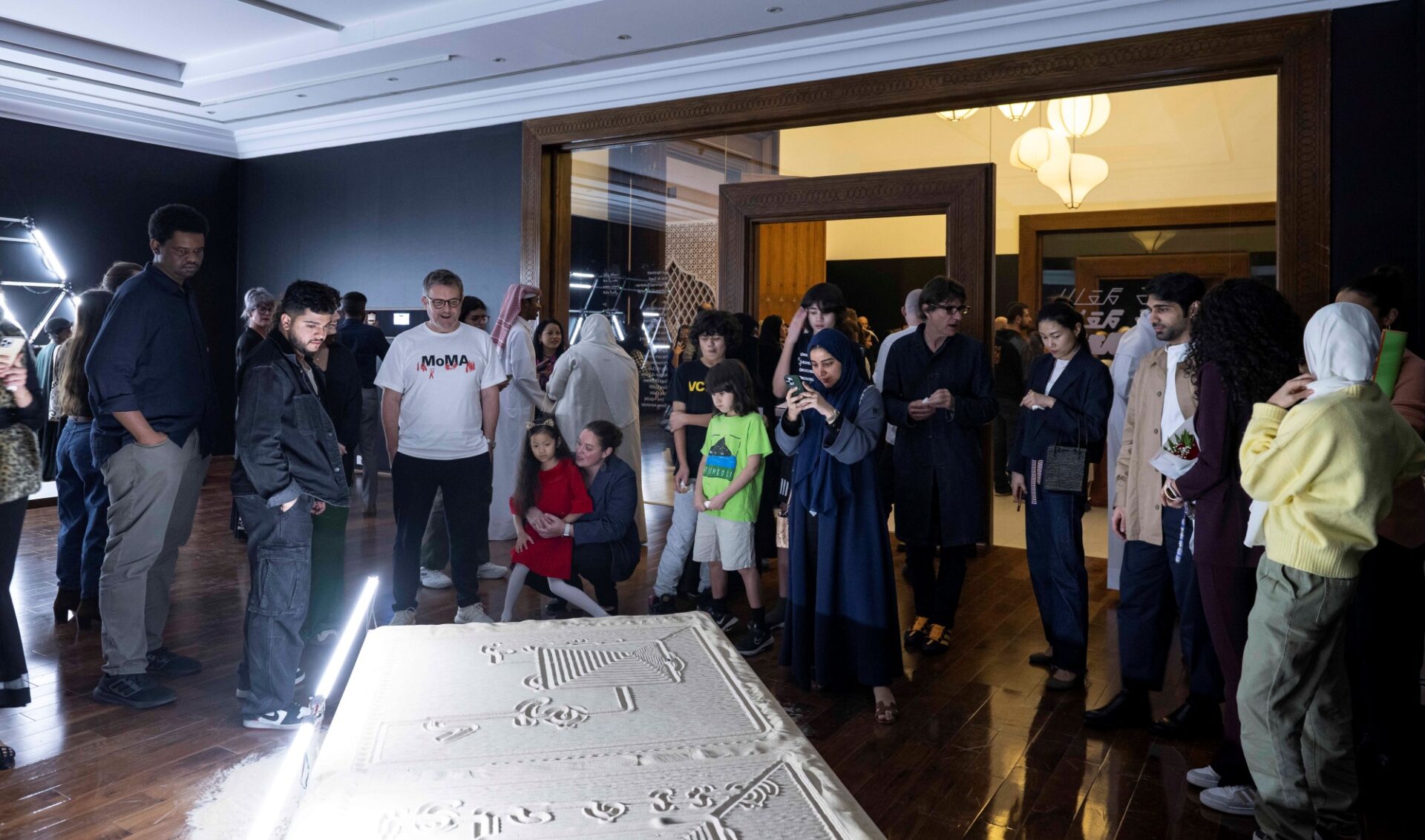
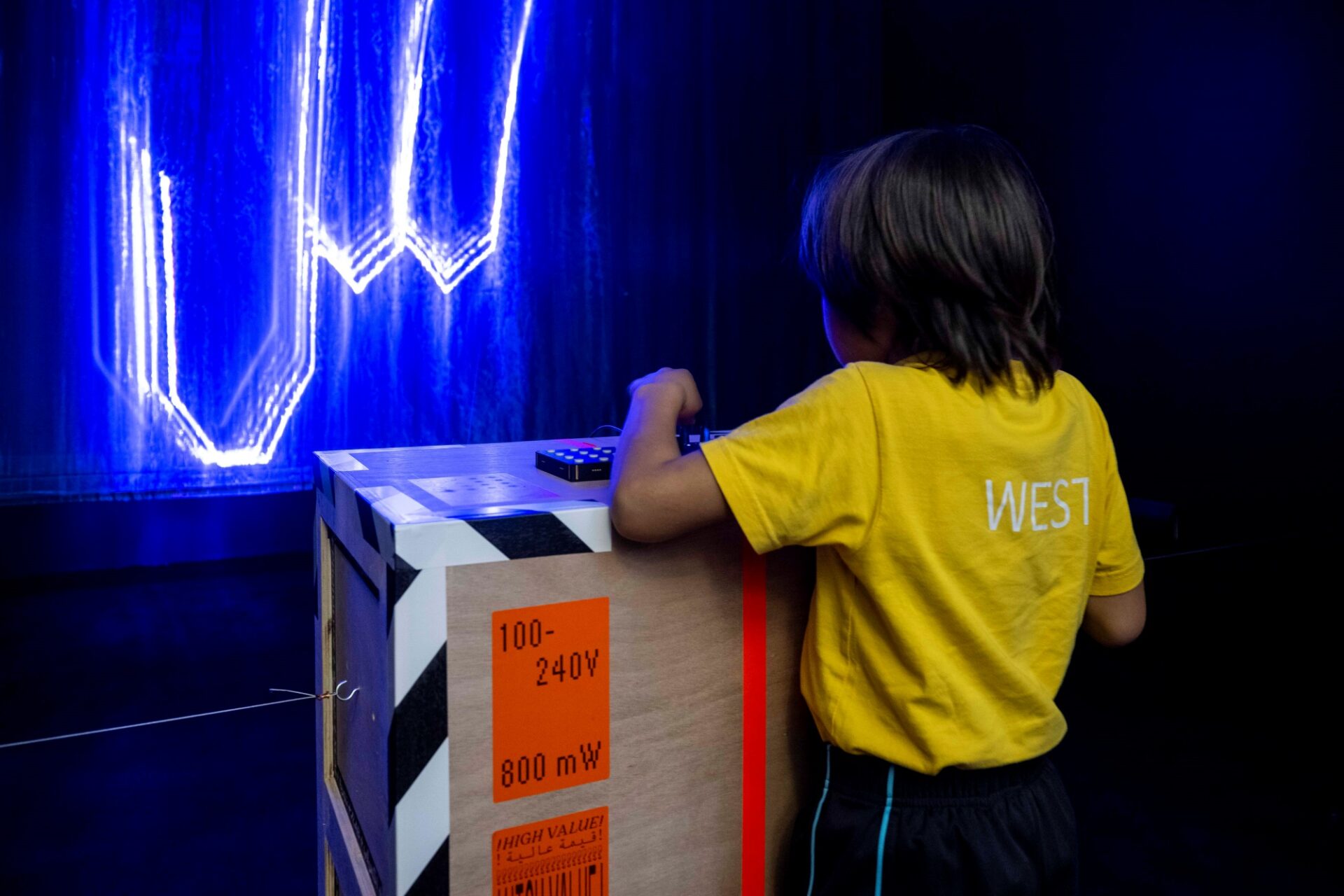 A machine that records memories on sand with a metal sphere as a writing tool, drawing on your appearance through machine coding, a light installation that imagines alternative typology histories, and Arabic script that embodies intrinsic meaning that is repeated to create an alternative Arabic; all these exhibits make way for interactive efforts making it easier for a layman to understand the layers weaved into the exhibition of machines ands typologies.
A machine that records memories on sand with a metal sphere as a writing tool, drawing on your appearance through machine coding, a light installation that imagines alternative typology histories, and Arabic script that embodies intrinsic meaning that is repeated to create an alternative Arabic; all these exhibits make way for interactive efforts making it easier for a layman to understand the layers weaved into the exhibition of machines ands typologies.
 This futuristic exhibition is a commissioned work from The Gallery to the xLab team.
This futuristic exhibition is a commissioned work from The Gallery to the xLab team.
The xLab is a collaborative and exploratory initiative founded by VCUarts Qatar faculty members Mohammad Suleiman, Levi Hammett, Haithem El-Hammali and Hind Al Saad. Looking at new forms of making and computation in the field of art and design, their aim is to go beyond the technical aspects of computation, using exploratory initiatives to research, produce and teach.
According to xLab, “Technology continues to shape who we are as humans and language is a big part of what makes us human. Technology has shaped how we communicate and how we speak to each other. Technology is the path, or the language, into the future.”
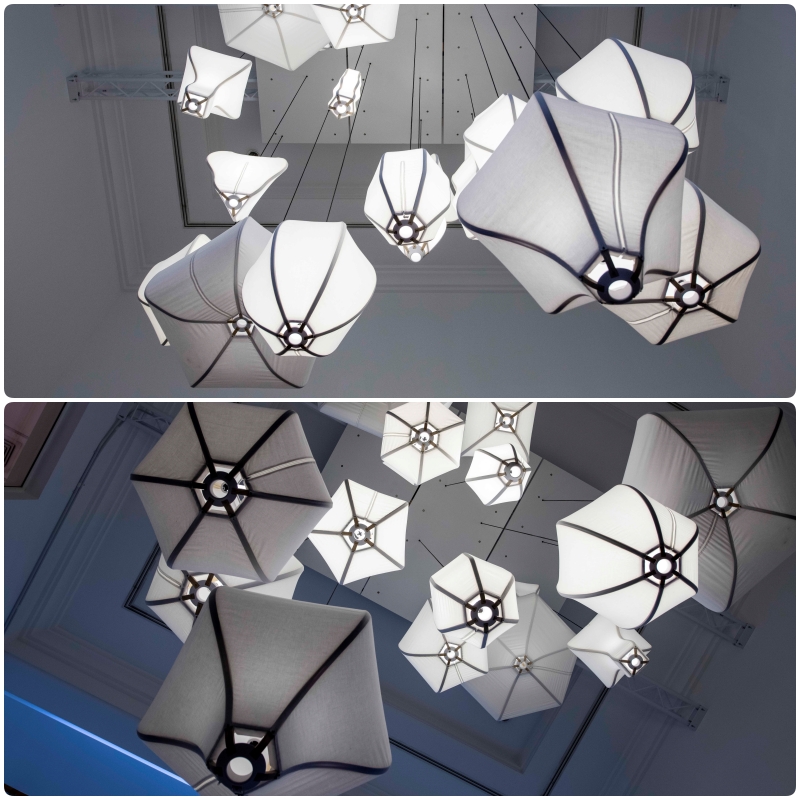 Looking at Virga, a product that is the outcome of an MFA field trip to Spain, is a beautiful sculptural light fitting that hangs from the Gallery ceiling, with technology manipulating its dimming feature.
Looking at Virga, a product that is the outcome of an MFA field trip to Spain, is a beautiful sculptural light fitting that hangs from the Gallery ceiling, with technology manipulating its dimming feature.
Giovanni Innella, who accompanied the students on their field trip tells us about the forms made from steam-bent wood. The hanging collection of glowing sculptural forms is made from steam-bent wood, 3D-printed connectors, LED lights and tailored fabric.
“The bent wood components that lend each lamp its distinctive form was designed by students and faculty from the MFA in Design programme and produced during an immersive workshop with Atelier La Juntana, a teaching and fabrication facility located on the north coast of Spain. The shape of the lamp is inspired by virga cloud formations-clouds found in hot climates, like in Doha, characterised by droplets of rain that evaporate before reaching the ground,” says Innella.
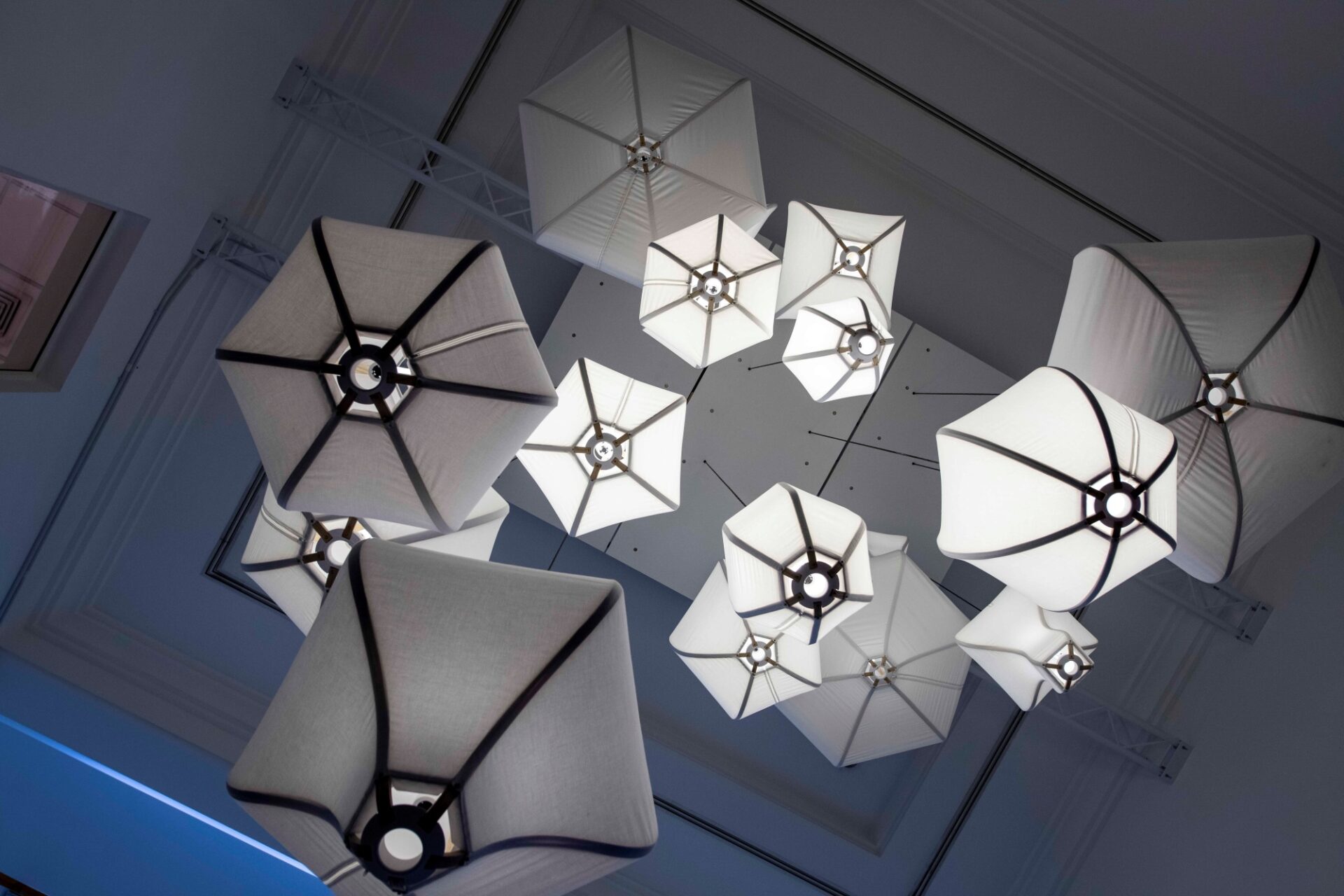 What is even more interesting about the project is that each curve of the wood form was designed and made in such a way that it fit the suitcase of the student who made it, to ensure that it reached Doha, safe. The pieces were then assembled in Doha. The function and the placement of the bent forms were already decided by the students, thus giving the designers, a purpose, an aim which led to design-thinking, solution finding and serving the purpose of their journey.
What is even more interesting about the project is that each curve of the wood form was designed and made in such a way that it fit the suitcase of the student who made it, to ensure that it reached Doha, safe. The pieces were then assembled in Doha. The function and the placement of the bent forms were already decided by the students, thus giving the designers, a purpose, an aim which led to design-thinking, solution finding and serving the purpose of their journey.
Hanging down from the ceiling of The Gallery entryway, Virga dims and brightens the light in poetic simulation, exploring the relationship between technology and purpose.
While Virga was designed by MFA in Design students, the lighting and dimming of the lamps were the results of technology weaved in by xLab.
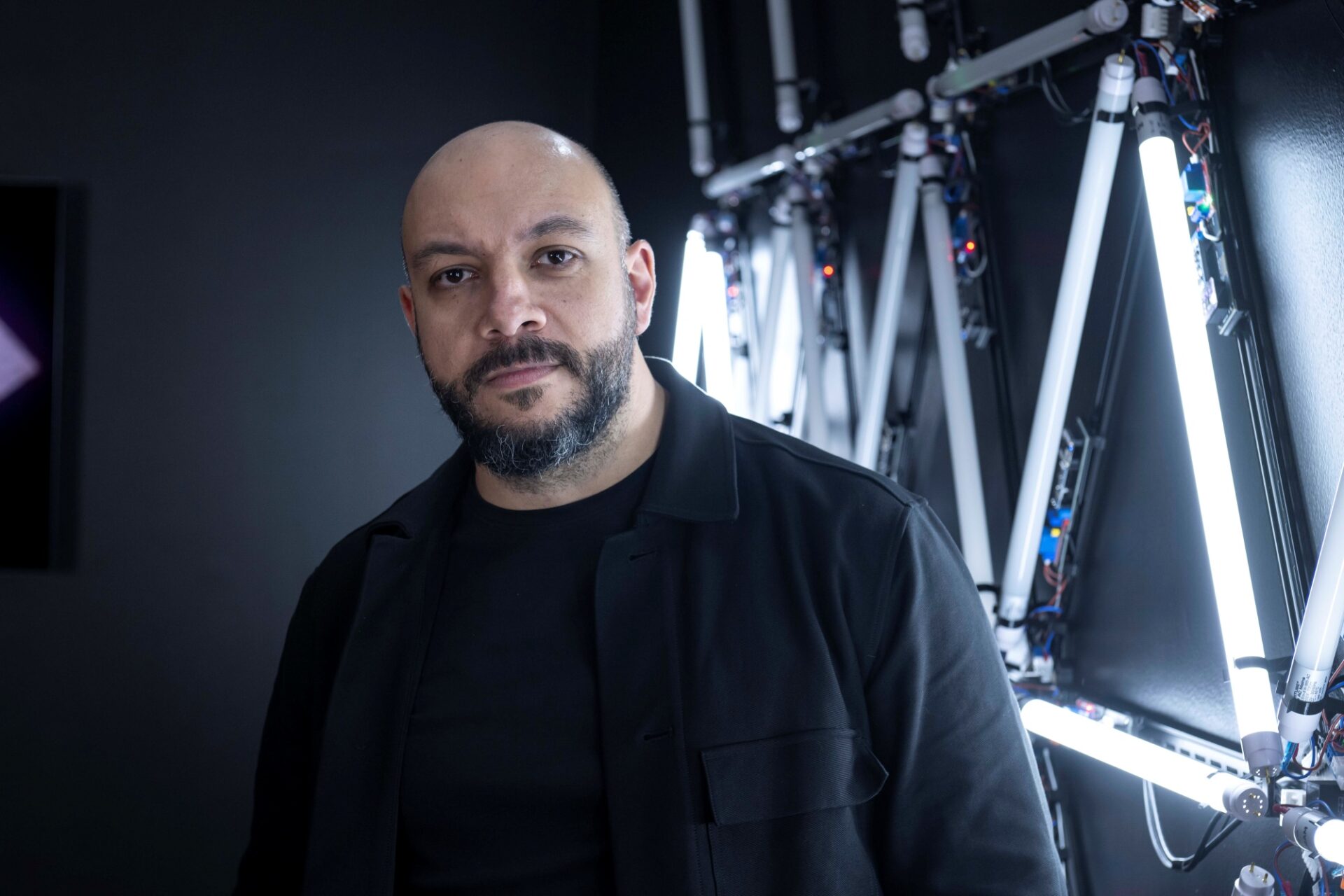 “We are entirely a collaborative research and technology practice that tries to fill in any gap that might rise in a design project, just like the works exhibited here like reimagining Arabic typology as a tool for design making,” explains Mohammad Suleiman.
“We are entirely a collaborative research and technology practice that tries to fill in any gap that might rise in a design project, just like the works exhibited here like reimagining Arabic typology as a tool for design making,” explains Mohammad Suleiman.
While the process of making and collaborating appears very tedious and cumbersome, Suleiman says that the process was very effortless, since students and designers with the same passion came together, throwing ideas, building on thoughts and inspirations to create the whole. “Anyone can pitch in ideas and take a leadership role in taking the design forward,” explains Suleiman, “These topics are very fundamental to who we are – it is very interesting to explore from an artistic perspective.”
This relationship between technology and humanity, the pursuit for deeper meaning and connection in all aspects of the human experience is what turns computational design into an artistic practice.
The xLab group of artists hopes that a larger impact of the Language-as-Machine exhibition will be to engage the global community in dialogue about the influence of technology on culture in the modern world.

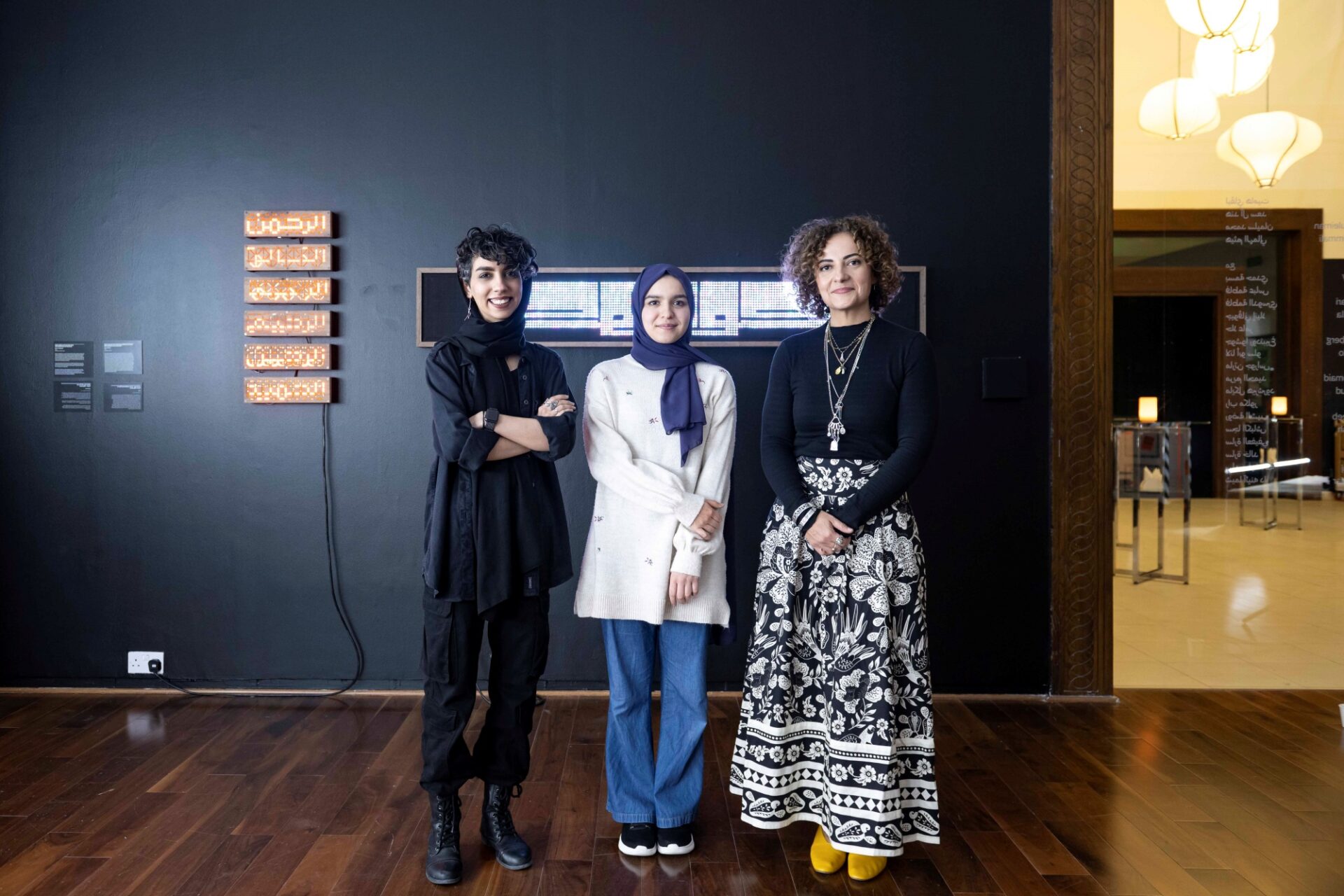 Some of the projects take a closer look at Arabic calligraphy as an artistic heritage through three lenses that look backward, inward, and finally, forward, to deconstruct the technological evolution of script and generate alternative outcomes. Others focus on the structure of language and technology and how they influence each other. Also explored in the exhibition is the preservation of linguistic heritage, with a look to the future and how language and script can be preserved while they evolve.
Some of the projects take a closer look at Arabic calligraphy as an artistic heritage through three lenses that look backward, inward, and finally, forward, to deconstruct the technological evolution of script and generate alternative outcomes. Others focus on the structure of language and technology and how they influence each other. Also explored in the exhibition is the preservation of linguistic heritage, with a look to the future and how language and script can be preserved while they evolve.
The body of work and collaborations of VCUarts Qatar students, alumni and professors, culminating in a total of nine installations featured in this exhibition. The participating artists are Basma Hamdy, Fatima Abbas, Fatima Al Dosari, Giovanni Innella, Hala Amer, Joshua Rodenberg, Lana Abou Selo, Martin Juras, Michael Hersurd, Rab McClure, Roudah Al Sheeb, Saga Elkabbash, Sara Al-Afifi, Sara Khalid, Selma Fejzullaj and Shima Aeinehdar.
All Images Courtesy VCUArts Qatar
Photography Raviv Cohen


